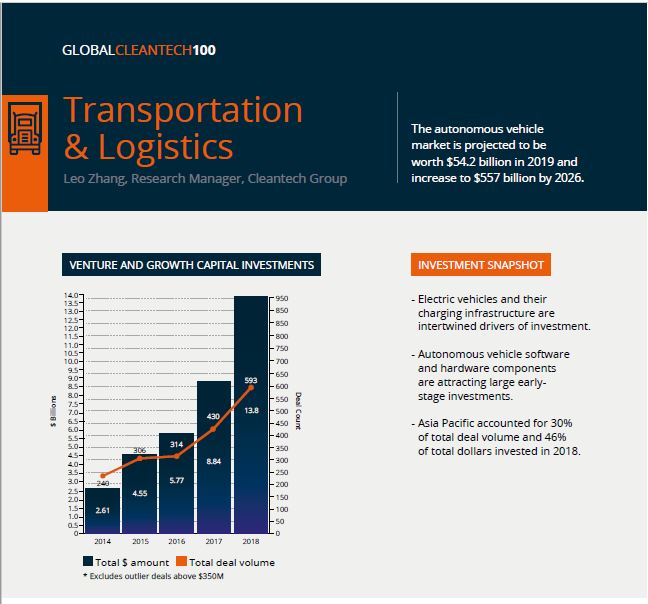EV Charging: Software and Grid Services
Vehicle-to-grid, or V2G, is becoming a buzzword in the electric vehicle (EV) charging industry with 50 V2G projects around the world trying to figure out how to make it work for all participants – EV owners, utilities, auto OEMs and EV charging developers. V2G technology involves communication between EV chargers and the power grid to delay charging and/or dispatch stored electricity back to the grid, providing demand response and frequency regulation services. This effectively turns EV batteries into an energy storage resource. We talked to a few players to get their perspectives.

Attractiveness
Although EV market share remains low throughout most of the world, government subsidies, electrification goals and falling battery costs will drive EVs to a projected 57% of all passenger vehicle sales by 2040. One scenario assumes most charging occurs at home where the projected influx of EVs could create added stress on the grid during the peak demand hours of 6-9 a.m. and 5-9 p.m. In another scenario with a higher percent of autonomous fleets and lower individual ownership, charging could occur in concentrated distributed sites. In countries with relatively high and growing percent of renewables like California, Denmark and the UK, utilities and grid operators are becoming interested in V2G as one option to balance impact of EVs and renewable energy on the grid.
V2G technology can offer load management through demand regulation, energy storage and frequency regulation. Demand regulation involves reducing charging speeds or shifting charging times to smooth out fluctuations in demand and better match demand with supply. Individually owned EVs are parked most of the time, and frequency regulation allows parked EVs to offer ancillary grid services, charging and discharging the battery in response to signals from the grid operator. In this way, each EV becomes a distributed energy storage resource capable of off-taking electricity during periods of high renewable generation and/or low demand and discharging electricity back onto the grid during periods of high demand and/or low renewable generation.
V2G services also create value for EV owners by reducing charging costs. One study found that V2G services could reduce charging costs by up to 13%. This figure could be higher when considering EV fleet owners, particularly electric bus fleets. Owners of electric, and eventually autonomous, fleets are incentivized to own their own charging stations, and V2G technology could aggregate the fleet into a significant grid resource.
“In countries with a relatively high and growing percent of renewables like California, Denmark and the UK, utilities and grid operators are becoming interested in V2G as one option to balance the impact of EVs and renewable energy on the grid.”
Business Models
A lack of a consistent regulatory framework to integrate V2G services with the grid and low penetration levels of renewable energy and EVs in most countries, means that viable business models for V2G are still emerging. Pilot projects have been testing revenue-sharing between EV owners and charging operators and different compensation models, including feed-in tariffs.
Competitive Landscape
Leaders in the grid services market are Nuvve, eMotorWerks, PlugShare, Greenlots and Kisensum. Competition is largely based on geography and technology offering. Greenlots, eMotorWerks and Kisensum have been acquired by Shell, Enel (Enernoc) and ChargePoint, respectively, to add grid and fleet management services to existing EV charging offerings.
- San Diego-based Nuvve is a leading player in Denmark, offering a turnkey solution to develop, supply, install and manage chargers, as well as providing V2G services. The company’s technology is unique as it provides frequency regulation in addition to demand regulation. Nuvve operates and manages the chargers, receiving compensation from the utility for providing demand response and frequency regulation through bi-directional charging. The company shares these revenues with EV owners.. Nuvve is also active in Delaware and is expanding to France, the UK, Belgium and Italy through a joint venture with EDF to offer V2G services.
- Greenlots, the developer of a software platform that manages and communicates with chargers to shift EV charging load and balance the grid, operates on a technology-based licensing model. The company supplies and installs chargers, then licenses the V2G technology to charge station operators. The company also serves utilities by offering grid balancing software to allow grid operators to aggregate and shift EV loads. Acquired by Shell in January 2019, Greenlots works with retail and commercial customers to develop and optimize EV charging infrastructure, particularly fleets.
- Kisensum offers a fleet and energy management software platform that allows fleet managers to control and optimize grid services, local renewable generation and energy storage. The company was acquired by ChargePoint as a value-add service in anticipation of fleet electrification. Kisensum was the original developer of Open ADR (Automated Demand Response) technology, which was sold to Honeywell. In addition, the company developed an entire software suite to assign EVs, monitor charge states and trade energy at night in the 4 second CAISO market. Kisensum has also run a pilot project with EVgo to develop a microgrid for DC fast charging in which Kisensum controlled the batteries and the flow of energy between vehicles and grid.
Get Actionable Insight on the Companies and Trends Shaping the Future of Mobility

Keep an eye on…
Pilot projects are now demonstrating different V2G business models, such as V2GB, or Vehicle to Grid Britain, by Element Energy and the V2G pilot project by OVO Energy and Nissan testing residential services. In addition, electrification of fleets, particularly bus fleets, and new ownership models aggregating privately-owned vehicles into fleets will likely prompt further development and integration of V2G services due to the significant potential grid capacity of aggregated vehicles. The acquisition trend will likely continue as larger players seek to leverage the technological expertise of charging software and service providers to be early movers in the V2G market. The commercial success of V2G will largely depend on utilities and ISOs creating a market for the services by developing a compensation framework where EV owners, charge station aggregators and grid operators all benefit.


